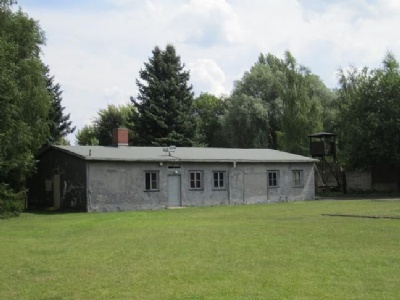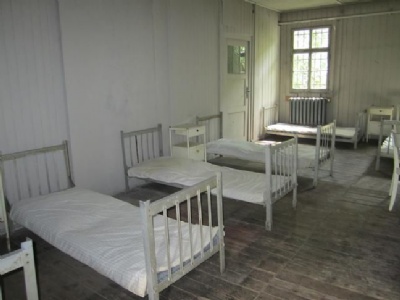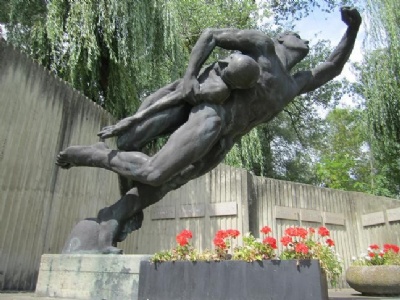Wernigerode
In 1941, a labor camp was established for about 300 forced laborers from France and Flanders in the city of Wernigerode. These were forced to work in nearby industries set up by Rautal Werke. In the spring of 1943, the camp became a satellite camp to Buchenwald and was codenamed ”Richard”. The camp consisted of seven barracks and at most (1944) there were about 800 prisoners in the camp, most of them from Eastern Europe. The prisoners were forced to work in a war-producing industry and later in the war they were also forced to build tunnels in the nearby Harz Mountains. In particular, the construction work at the tunnels claimed many victims. Prisoners who were no longer considered able to work were sent back to Buchenwald and probably killed for being "unproductive". The purpose of the tunnels was to locate industries inside them and the mountains thus became a natural protection against allied bombings. In November 1944, prisoners from the camp began building a new satellite camp to Buchenwald at nearby Hasserode where the Germans planned to manufacture parts for V-2 rockets. When this was completed in December 1944, Wernigerode was dissolved and the prisoners were moved to Hasserode.
Current status: Partly preserved/demolished with museum (2011).
Address: Veckenstedter weg 43, 38855 Wernigerode.
Get there: Car.
Follow up in books: Kogon, Eugen: The Theory and Practice of Hell: The German Concentration Camps and the System Behind Them (2006).







A surprisingly well-preserved small camp laying between houses and industries. The exhibitions in two of the barracks are characterized by a budget variant but they are simple and informative and the best of all is that they are also in English, which you can’t take for granted when it comes to the lesser known camp museums. One of the former barracks has been renovated into apartments.